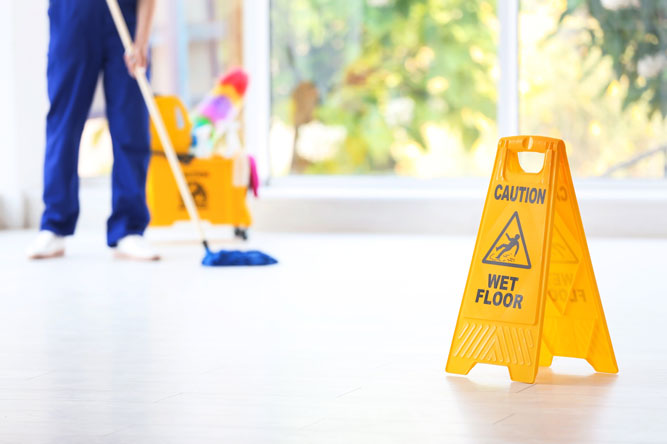
Information derived from the Centers for Medicare and Medicaid Services (CMS) Quality and Certification Oversight Reports (QCOR)[1] reveals that during the time period of August 1, 2023 to July 31, 2024, state surveyors wrote a total of 92,740 citations with 12,500 of those being cited at a substandard level of care.
The number 1 citation written during that time was tag F689: The resident environment remains as free of accident hazards as is possible; and each resident receives adequate supervision and assistive devices to prevent accidents.
This tag was written a total of 5,082 times with 35% of those being written at a substandard level of care (1,780).
The term “accident hazards” is a broad term and applies to any situation that the facility has control over that results or might result in a resident injury or illness due to issues in the physical environment (hot water temperatures, loose handrail, chemicals left unsecured), or equipment/devices (staff not operating an electronic lift correctly, wheelchair brakes not working properly, mattress on bed not fitting properly).
Adequate supervision (number of staff, their competencies, and training) needed for the types of care provided in your facility is determined by the completion of the annual Facility Assessment Tool, which should be revised during the year if necessary. Surveyors may also write an additional tag for F838-Facility Assessment if, during any survey, the number of staff on duty is less than the number identified as being needed in the current Facility Assessment Tool.
Avoiding Citation F689
The development of an effective system that identifies, evaluates, and implements interventions for hazards and risks is key in avoiding citation F689. An effective system includes the following components:
- The engagement of staff, residents, and families in developing a culture of safety and encourages identification and reporting of potential risks. This may include information obtained during a monthly Safety Committee meeting, Resident and/or Family Council Meetings, Environmental Rounds, Management Rounds, QA meetings, Care Plan Meetings, and 24/7 availability of work orders for staff, residents and families to fill out with concerns.
- A reporting system which allows for review of data to track and trend incidents/accidents. Do falls seem to be occurring in one hall more than others? Are most falls happening during a certain time frame? Has the same incident happened to several different residents? Knowing this type of information helps to determine what is needed to help reduce or prevent further incidents. Staff education and competencies could be factors, particularly if staffing potentially needs to be increased during a certain time frame, if there is a system failure which needs modification, or if there is a physical plant issue that requires resources.
- Identification of the root cause of incidents/accidents when they occur in order to develop appropriate interventions to prevent reoccurrence. If a resident slides out of their wheelchair and the root cause is not identified, an ineffective intervention will be the result. Did the resident slide out of their wheelchair as they needed to use the bathroom, and a toileting schedule should be implemented? Was the wheelchair cushion slippery and the resident was unable to stop themselves from sliding off, and Dycem or other non-slip material should be placed on the cushion?
- Communication of interventions to staff. Facilities should have an effective process in which safety concerns or interventions are communicated to appropriate staff members. Typically, this F689 citation has been written due to staff not following interventions, such as not putting a bed in low position, not putting a fall mat next to the bed, not placing Dycem on the wheelchair cushion, hot beverages being served without a lid, etc. It should be noted that interventions do not solely belong to the nursing staff members; they can also include dietary, housekeeping, and maintenance. Each department should have a communication process that each employee in the department is aware of.
- Resources to address safety concerns. Resources may include people, supplies, or money. If water temperatures are measuring too high and the temperature cannot be adjusted down due to issues with the hot water heater, resources (money) must be available immediately in order to prevent a potential burn situation. If a resident receives a skin tear from a wheelchair armrest cover that was torn, the cover (supplies) should be replaced immediately (or the resident should be placed in another wheelchair). If a resident is exhibiting aggressive behaviors and is hitting other residents, one-to-one staff (people) may be needed to keep the other residents safe.
- Review of the effectiveness of the program and modifying practices when necessary. The monthly Quality Assurance meeting is a great time to review incidents and accidents. If a facility continually has a higher number of incidents month over month, then the program is not effective, and practices must be revised. Should random audits be conducted to determine if fall or safety interventions are being followed? Are water temperatures being tested as required? Is the communication plan in place not being followed? If not, why?
How HDG Can Help
Health Dimensions Group® (HDG®) has nearly 25 years of senior living and care experience—owning, operating, and providing management and consulting services for a vast array of partners. HDG provides management services to 40 senior living and care communities in eight states—including independent living, assisted, living, memory care, skilled nursing facilities, and life plan communities—so we know the regulatory challenges our own communities face and are ready to help you with yours.
If you’re having trouble avoiding citations including F689, please contact HDG for a Positive Review and Evaluation Process (PREP) mock survey, in which a wide variety of issues—including nursing, staffing, and resources—are assessed in order to help reduce your facility’s risk for substandard levels of care and to assist you with implementing tools to remain in compliance.

